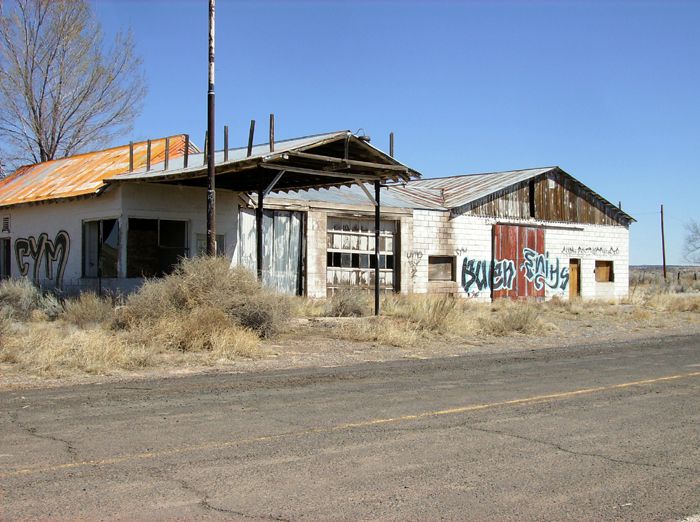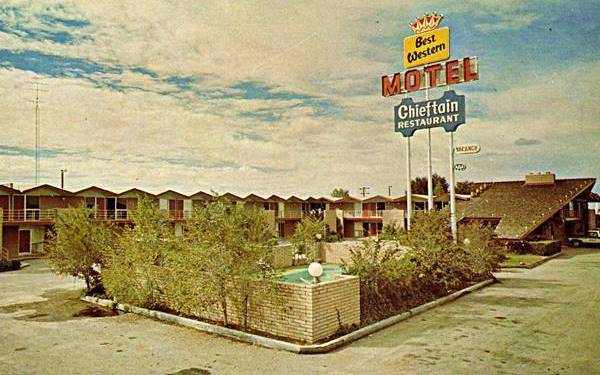
Chambers, Arizona: The Quiet Crossroads of Time and Testimony
The sun-baked asphalt shimmers, stretching an infinite ribbon across the vast, high desert plateau of northeastern Arizona. For many, Chambers is little more than a fleeting blur – a gas station sign, a cluster of buildings, a quick exit off Interstate 40 before the road plunges deeper into the mystique of the American Southwest. Yet, to dismiss Chambers so readily is to miss a subtle, profound narrative woven into the very fabric of this unassuming outpost. It is a quiet crossroads, a testament to resilience, and a gateway to landscapes that defy easy categorization, where the echoes of ancient history mingle with the persistent hum of modern travel.
Chambers, an unincorporated community in Navajo County, sits at a pivotal juncture. Historically, it was a vital stop along the Atchison, Topeka and Santa Fe Railway. Later, it became a beloved, if humble, fixture on the legendary Route 66, offering weary travelers a respite from the relentless miles. Today, it serves as a primary entry point to the otherworldly beauty of Petrified Forest National Park, a place where time itself seems to have solidified into stone. This layered existence – railroad, highway, national park – makes Chambers more than just a dot on the map; it’s a living museum of American transit and natural wonder, a place where the landscape tells stories more eloquently than any roadside marker.
A Land of Stark Beauty and Ancient Echoes

The physical setting of Chambers is, in itself, a character in its story. This is the Colorado Plateau, an elevated expanse characterized by its aridity, its vast, unobstructed skies, and its dramatic geological formations. Mesas rise like ancient sentinels, their layered flanks revealing eons of deposition and erosion. The air, thin and dry, carries the scent of sagebrush and distant dust. Winters are cold, often dusted with snow, while summers blaze with an intensity that demands respect. But it is the light, particularly at dawn and dusk, that truly transforms this landscape, painting the earth in hues of ochre, sienna, and deep violet, mirroring the kaleidoscopic canvas of the nearby Painted Desert.
Just a stone’s throw east of Chambers lies the entrance to Petrified Forest National Park, a landscape of such singular beauty and scientific importance that it draws visitors from across the globe. Here, 225 million years ago, a lush, subtropical forest flourished. When the trees fell, they were buried by sediment and volcanic ash, and over millennia, groundwater rich in silica permeated the wood, crystallizing into quartz and replacing the organic material. The result is a sprawling, colorful forest of stone, where logs lie scattered across the desert floor, each ring and knot perfectly preserved in rainbow hues.
"It’s like stepping into a different epoch," remarks Ranger Sarah Chen, a veteran interpreter at Petrified Forest. "These aren’t just rocks; they’re fossilized moments, a window into a world almost incomprehensibly ancient. And Chambers, for all its modern convenience, is the last stop before you truly immerse yourself in that deep time." The park also encompasses vast swaths of the Painted Desert, a lunar-like landscape of eroded badlands, where every shade from lavender to crimson washes across the sculpted hills. It’s a testament to the raw, untamed power of nature, a stark contrast to the human-made structures of Chambers but intrinsically linked by geography and the human desire to explore.
The Iron Horse and the Mother Road: A History of Connection
Chambers owes its initial existence to the westward expansion of the American railway system. The Atchison, Topeka and Santa Fe Railway laid its tracks through this territory in the late 19th century, creating vital lifelines for commerce, communication, and settlement. Small communities like Chambers sprang up along the rail lines, serving as water stops, telegraph stations, and supply depots for the burgeoning West. The railway brought goods, people, and a sense of connection to what was otherwise a formidable and isolated frontier.
But it was the advent of the automobile and the subsequent designation of U.S. Route 66 in 1926 that truly put Chambers on the map for the broader American public. Known affectionately as the "Mother Road," Route 66 became the primary artery for millions seeking opportunity in California, or simply the adventure of a cross-country journey. Chambers, strategically located near the New Mexico border and the entrance to the Petrified Forest, became an indispensable stop.
"In its heyday, Chambers was bustling," recalls Thomas "Tom" Miller, a third-generation resident whose grandfather ran a small motel and diner off the old highway. "Cars would be lined up at the gas pumps, families would pile out for a meal, and everyone wanted to know how far it was to the Petrified Forest or if they could make it to Winslow by nightfall. It was the epitome of the American road trip – a place to refuel, rest, and gather stories." Roadside attractions, albeit modest ones, dotted the landscape around Chambers, catering to the curious traveler. Businesses like the historic Geronimo Trading Post, a short drive west, sprung up, offering Native American crafts, Route 66 memorabilia, and quirky photo opportunities, further cementing Chambers’ role as a tourist gateway.
The golden age of Route 66, however, was finite. With the construction of the Interstate Highway System in the latter half of the 20th century, particularly Interstate 40, which largely paralleled and eventually superseded Route 66, many of these small towns faced an existential crisis. The interstate, designed for speed and efficiency, bypassed the Main Streets and local businesses that had thrived on the old road. Chambers, like countless other communities along Route 66, experienced a significant decline. Many businesses shuttered, buildings fell into disrepair, and the vibrant hum of constant traffic dwindled to a trickle.

Resilience and the Modern Crossroads
Yet, Chambers endured. It adapted. While the nostalgic ghost of Route 66 still lingers, whispered in the peeling paint of old signs and the silent skeletons of abandoned motels, the community found a new purpose. Its strategic location, primarily as a gateway to Petrified Forest National Park, ensured its continued relevance. Truck stops, catering to the constant flow of commercial traffic on I-40, became dominant features, offering fuel, food, and lodging to the long-haul drivers who traverse the continent.
"It’s a different kind of busy now," says Maria Rodriguez, who manages one of the truck stops, her family having moved to Chambers decades ago. "Less of the leisure traveler, more of the working man and woman. But people still need a place to stop, to eat, to get a good cup of coffee. And they still stop to ask about the park. Chambers is still serving its purpose, just to a different generation of travelers."
The community today is a blend of these commercial enterprises, a few remaining original residents, and families, many of whom are members of the Navajo Nation, for whom this land is ancestral. The nearby Navajo Nation reservation influences the local culture, adding another layer to the already rich tapestry of the area. While amenities are sparse – a few motels, gas stations, and fast-food options – they are essential. For those venturing into the vastness of the Navajo Nation or the national park, Chambers is often the last reliable stop for supplies and services.
Beyond its practical utility, Chambers offers a subtle, almost meditative appeal. It’s a place where the grandeur of the landscape forces a certain humility, where the silence, broken only by the whisper of the wind or the distant rumble of a train, allows for reflection. It reminds us that not every place needs to be a bustling metropolis or a pristine wilderness destination to hold significance. Some places derive their importance from their very understatedness, from their role as connectors, as places where journeys intersect.
The Enduring Spirit of the Open Road
Chambers, Arizona, is more than just a cluster of buildings by an interstate. It is a living artifact of American history, a quiet sentinel in a breathtaking landscape. It embodies the enduring spirit of the open road, the romance of the railway, and the timeless wonder of the natural world. It speaks to the resilience of small communities in the face of change, and to the human need for connection and sustenance, both physical and spiritual, in the vast expanses of the West.
So, the next time you find yourself hurtling along I-40, consider taking that exit for Chambers. Pause. Look around. Breathe in the high desert air. You might just find that this unassuming crossroads, this quiet testament to time and testimony, offers a deeper story than you ever imagined – a story etched in petrified wood, whispered by the wind, and kept alive by the steady pulse of travelers passing through. It’s a reminder that sometimes, the most profound experiences are found not in grand destinations, but in the humble, steadfast places that connect them all.


